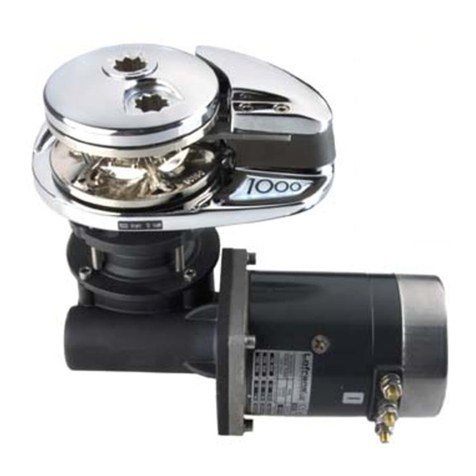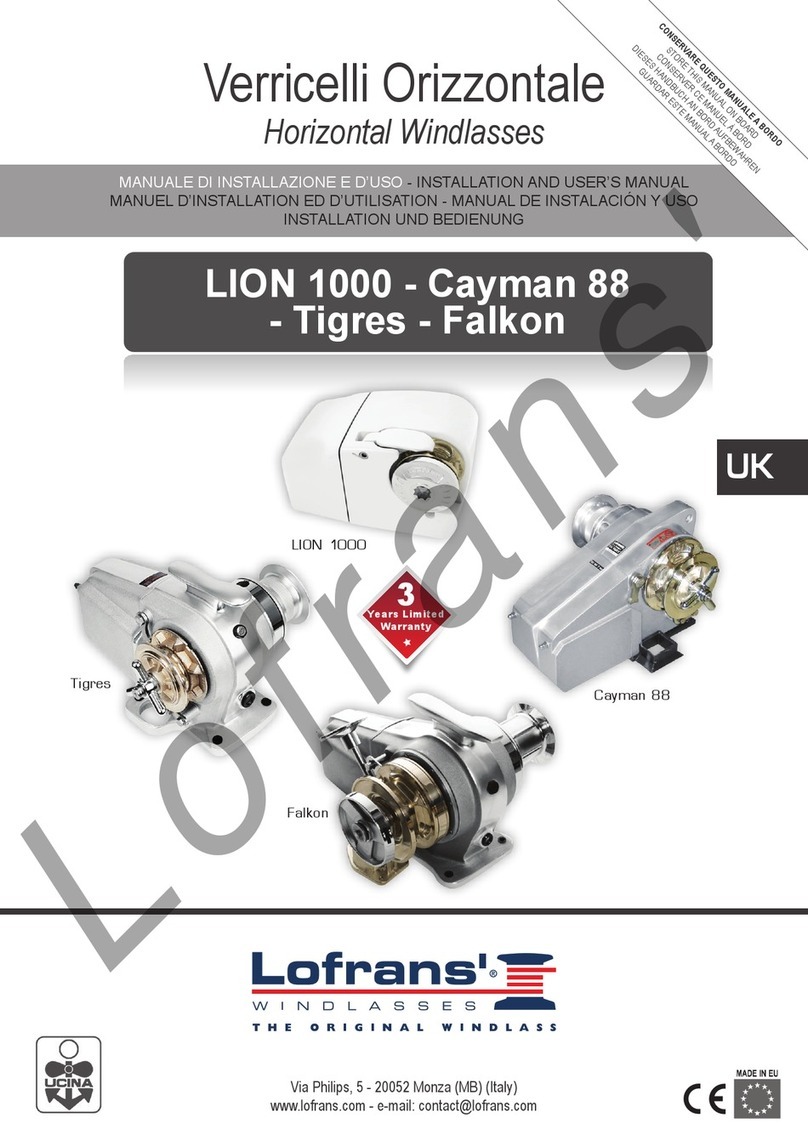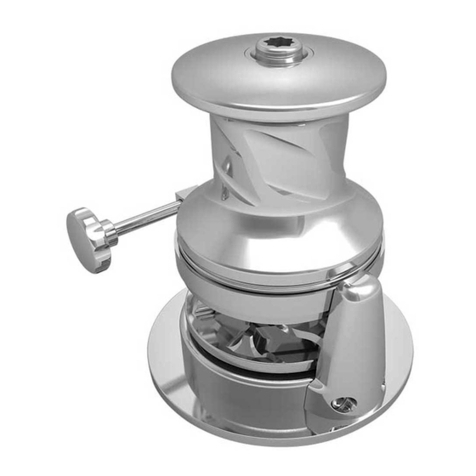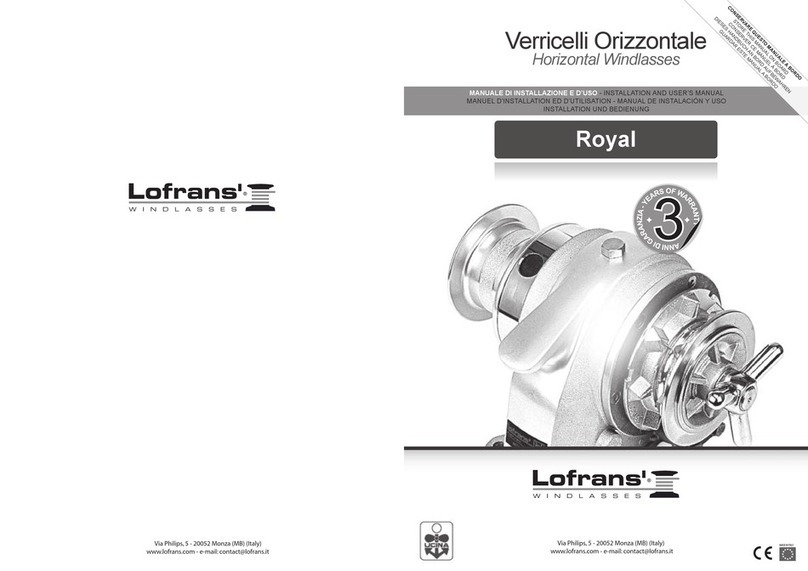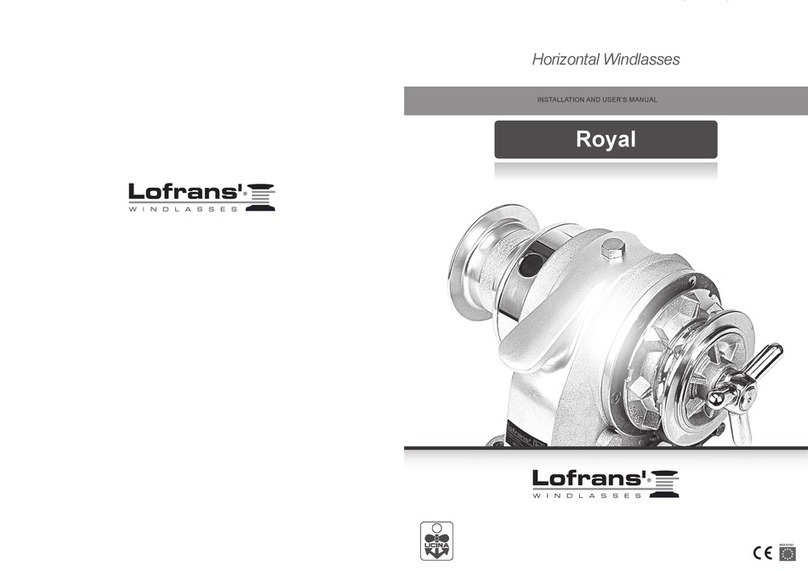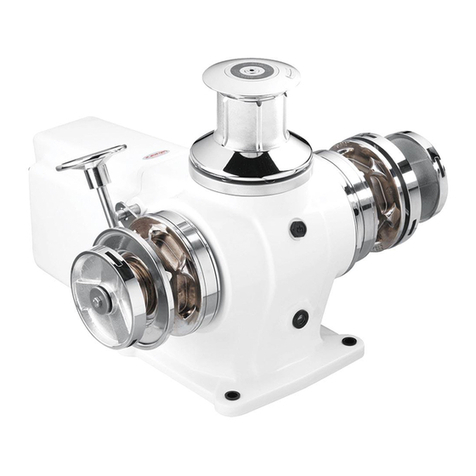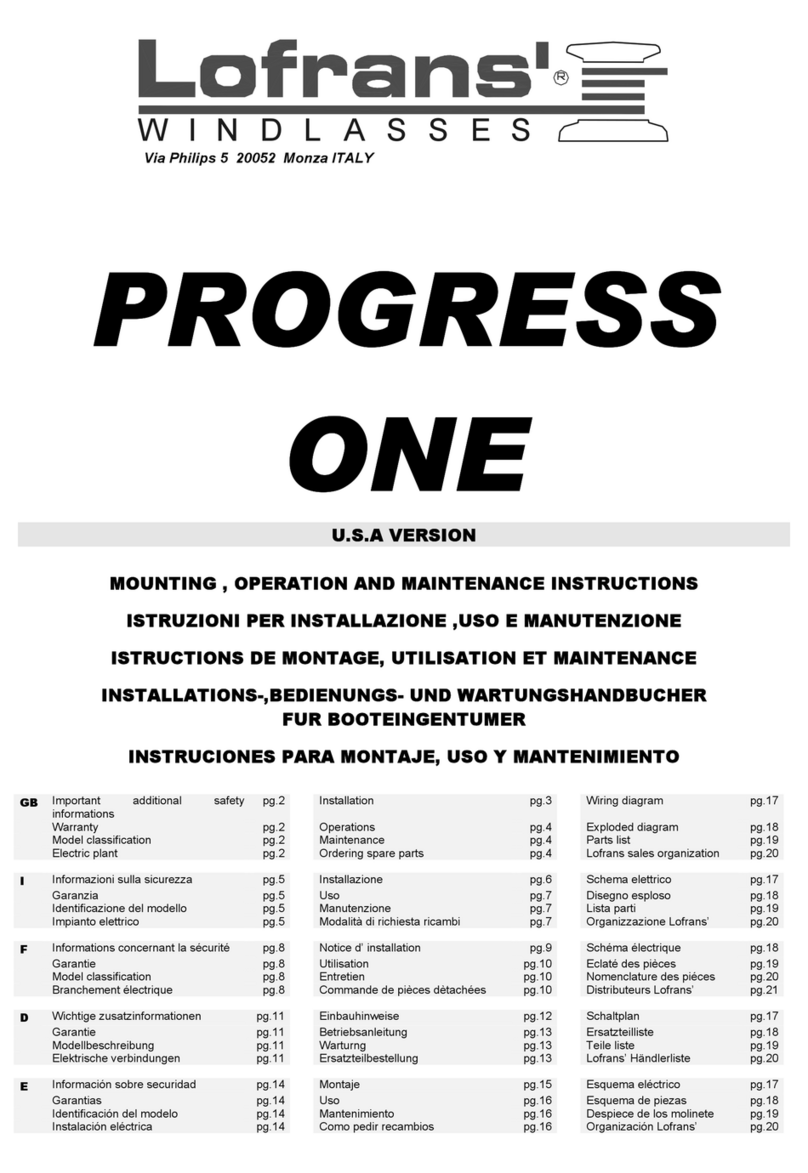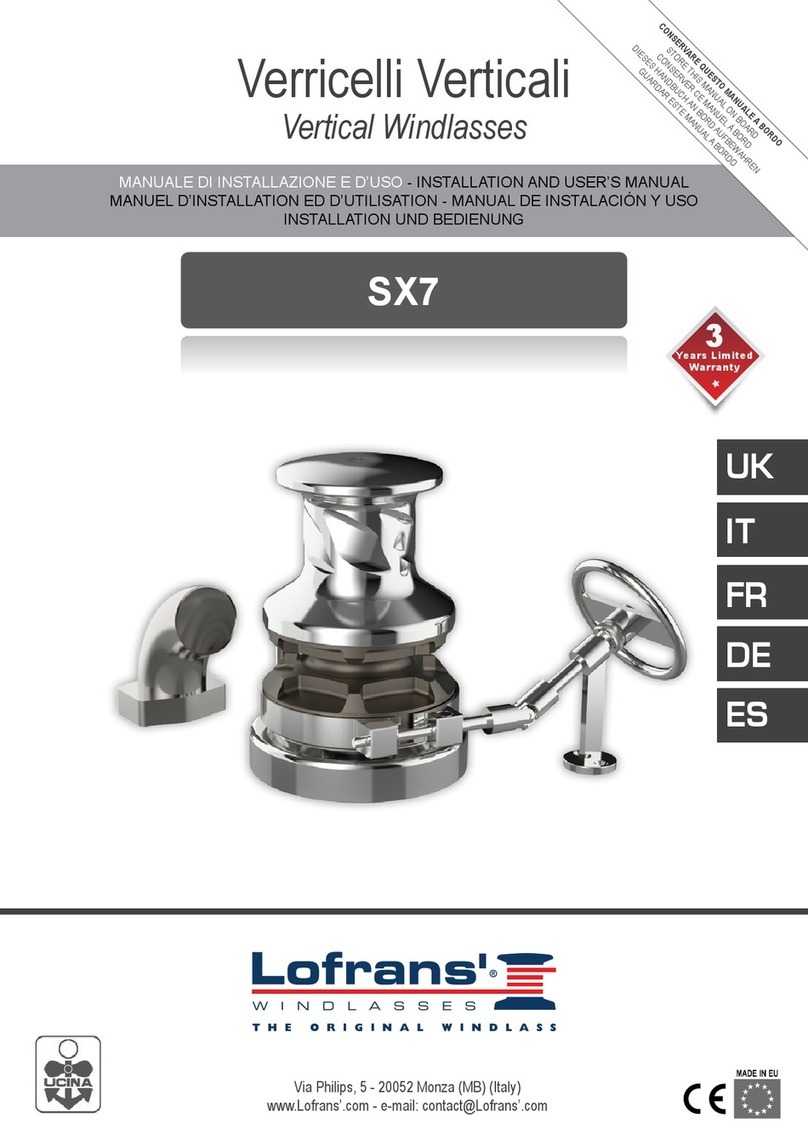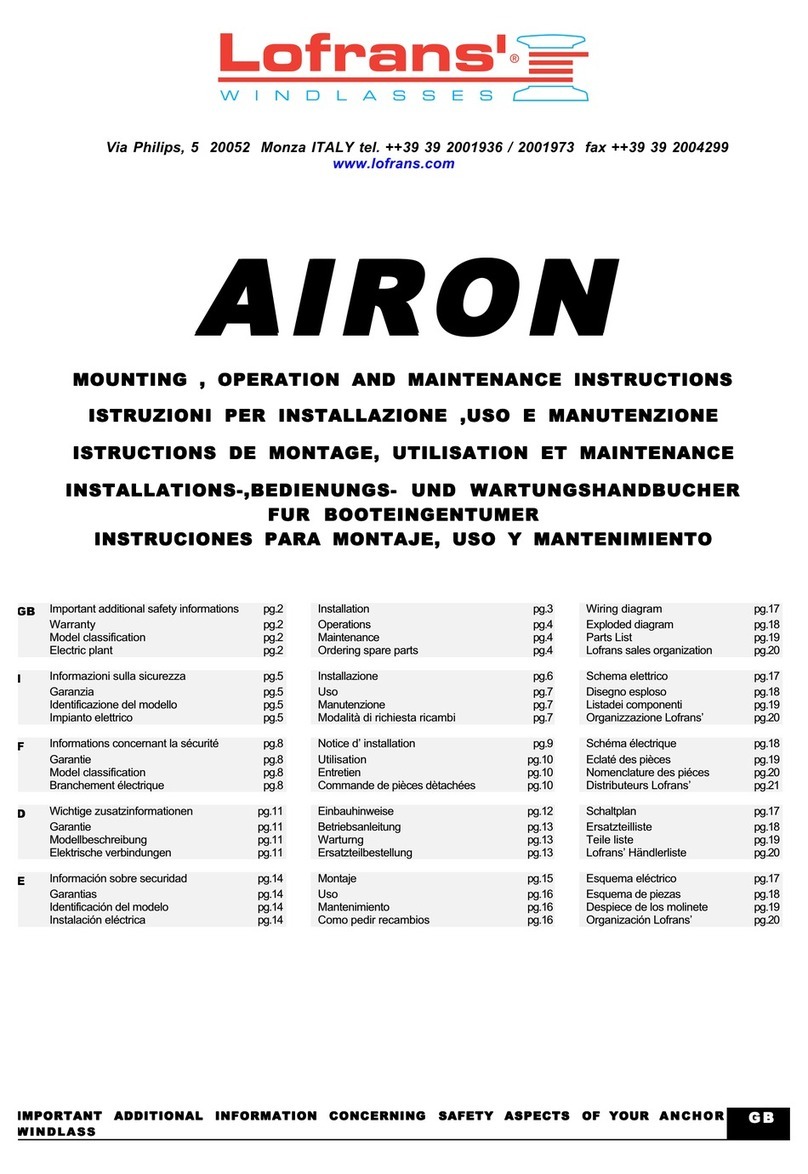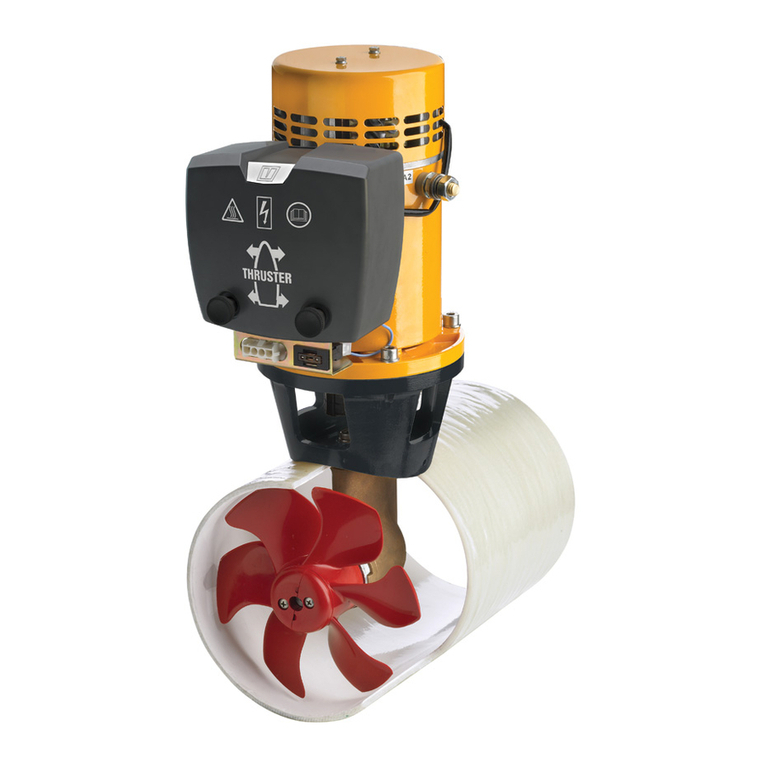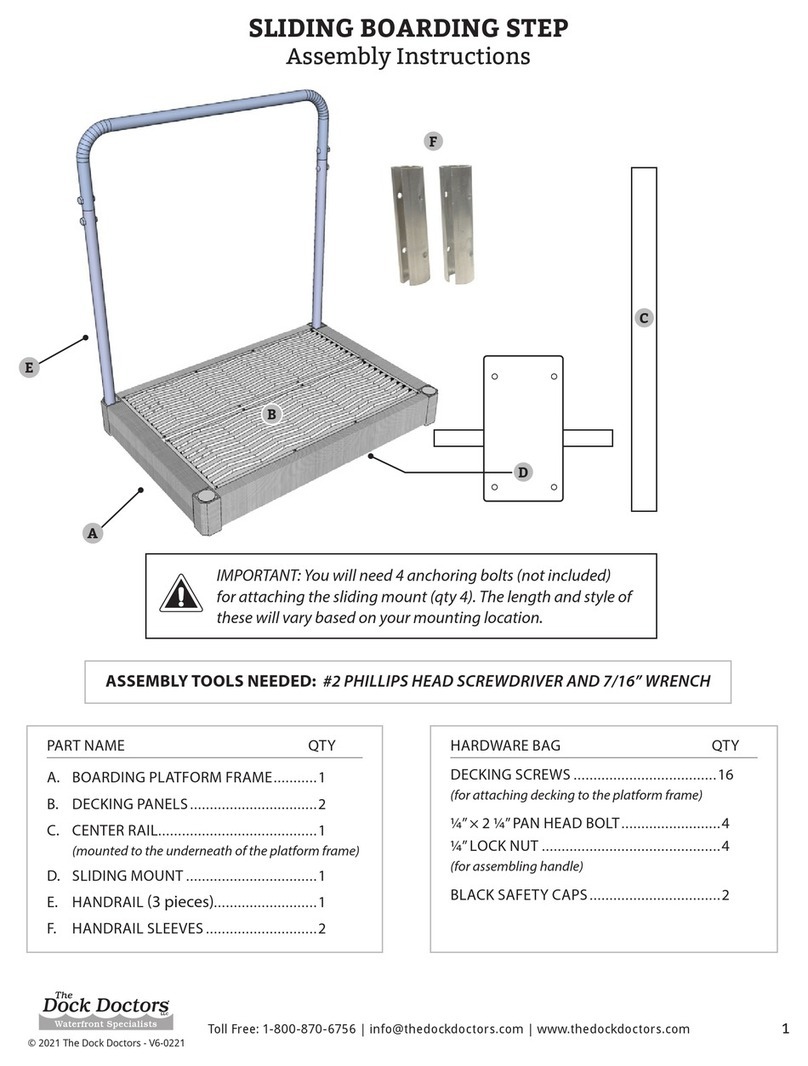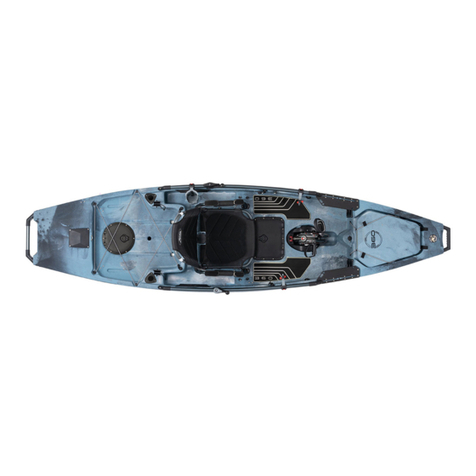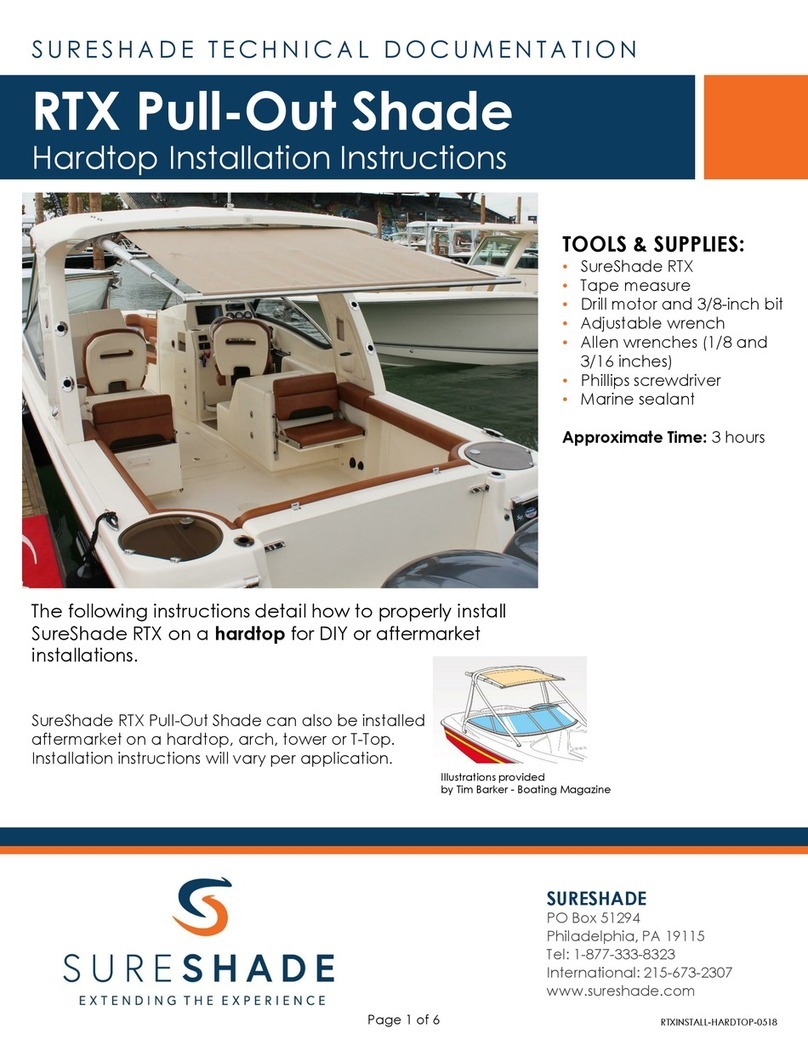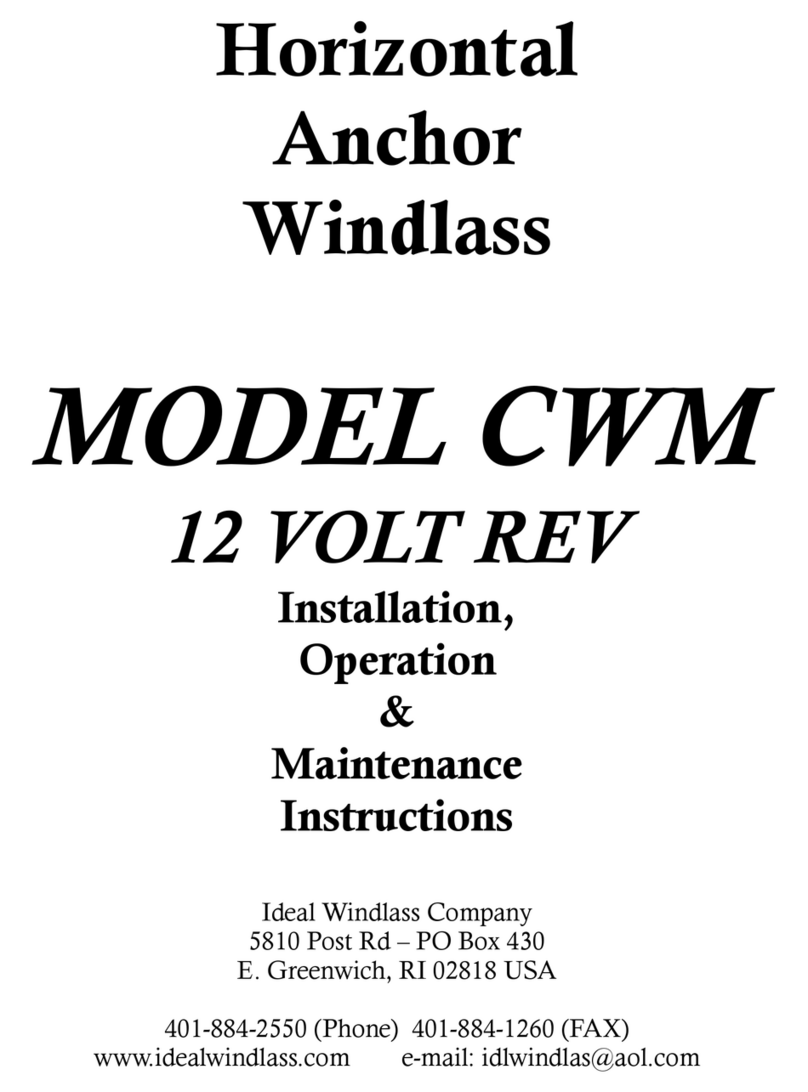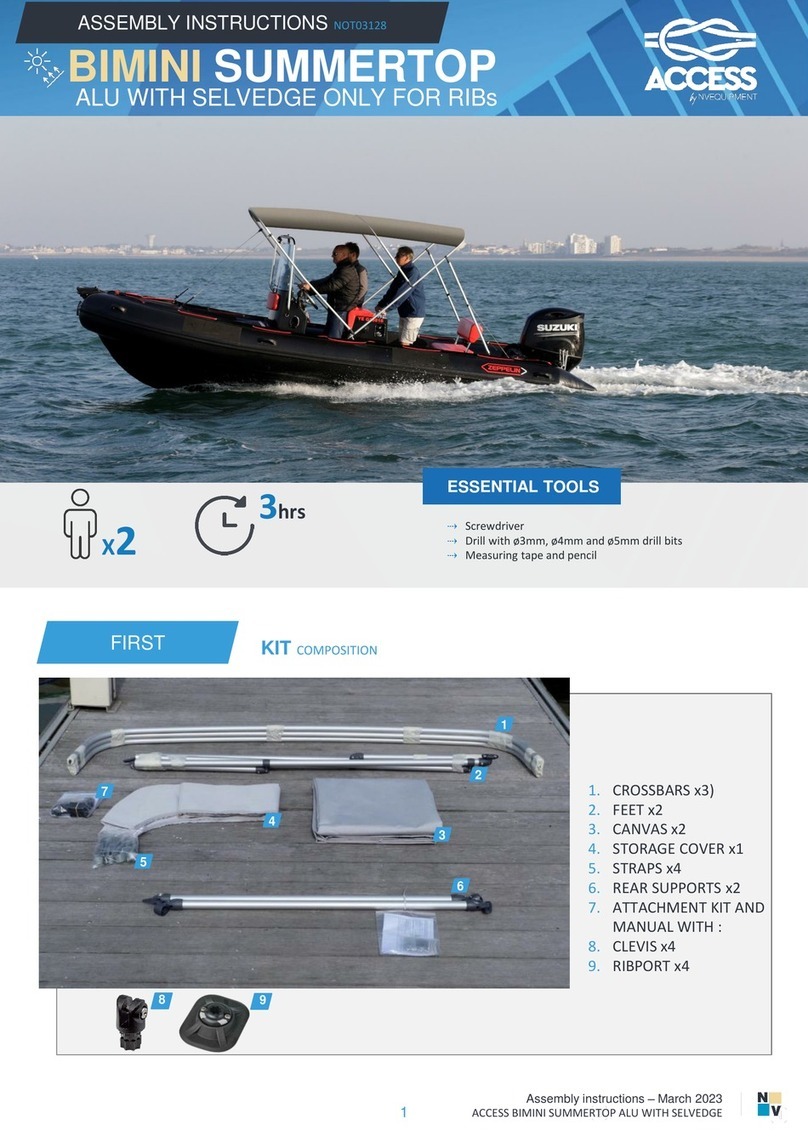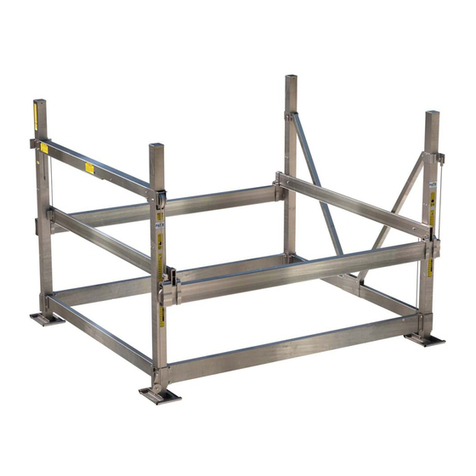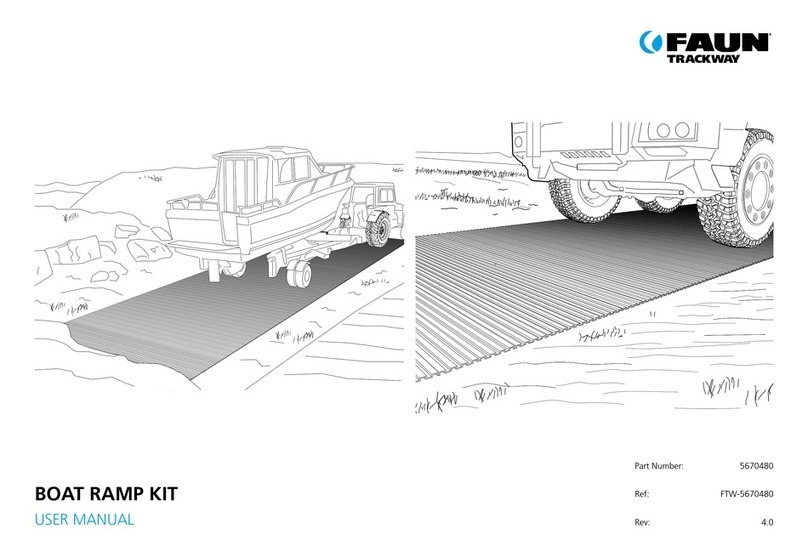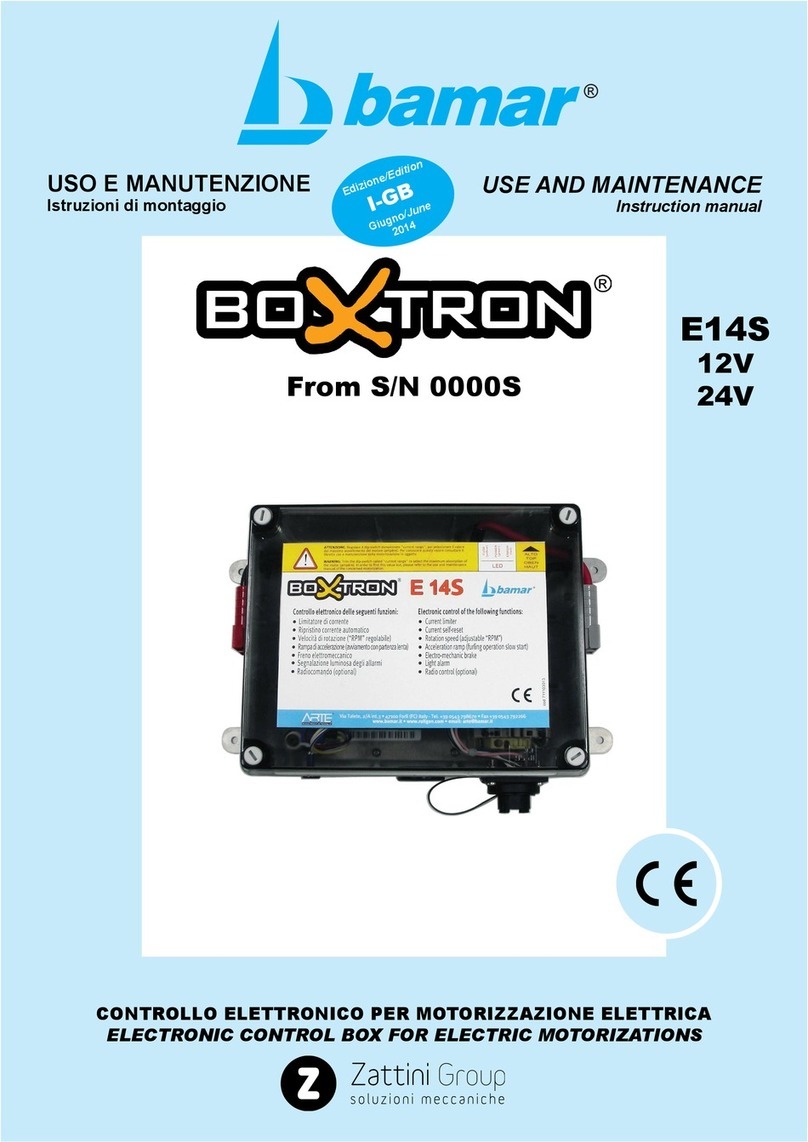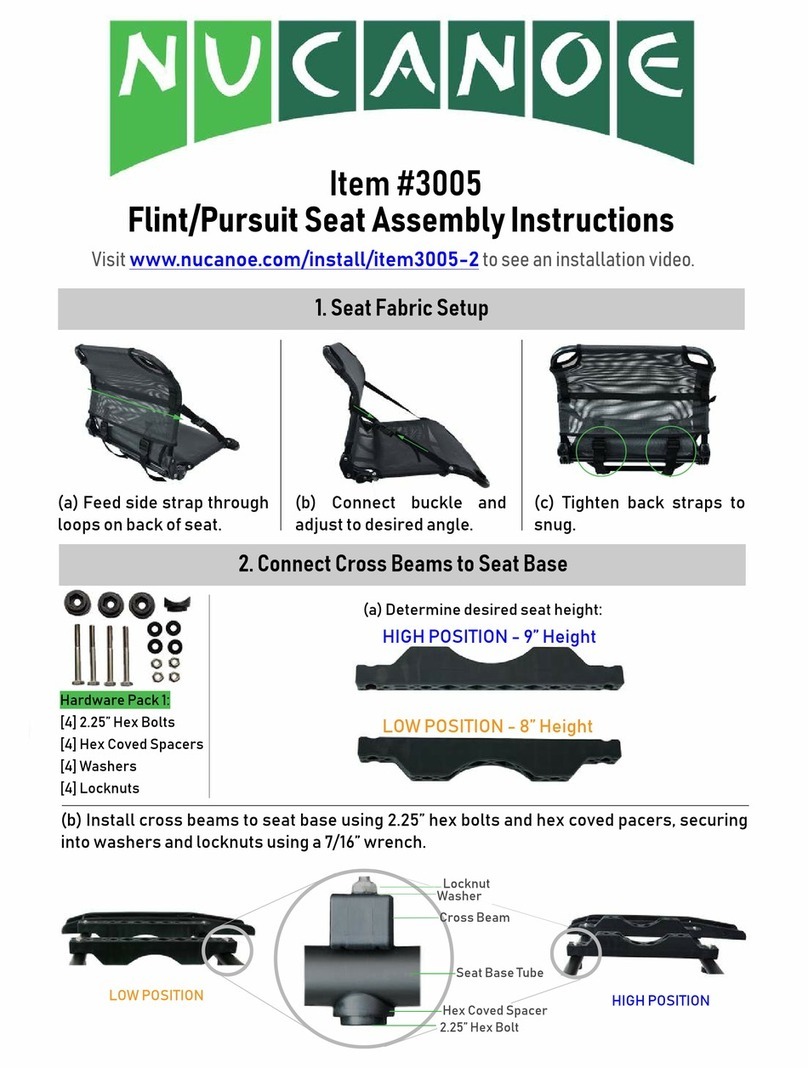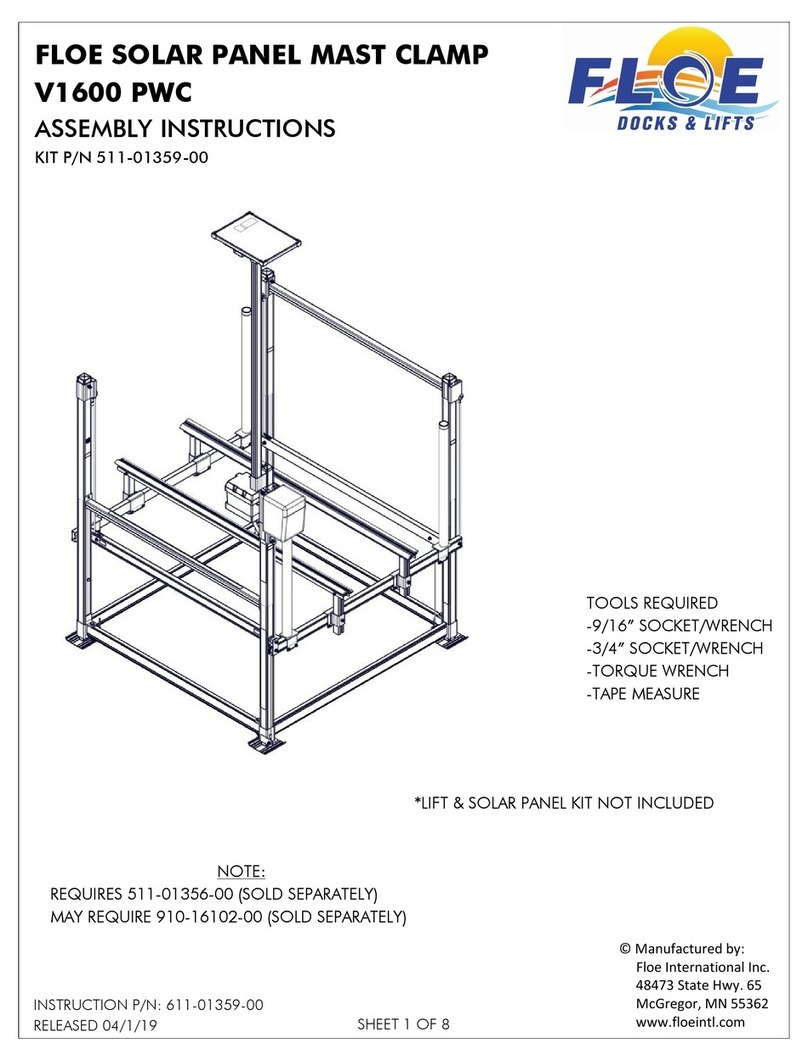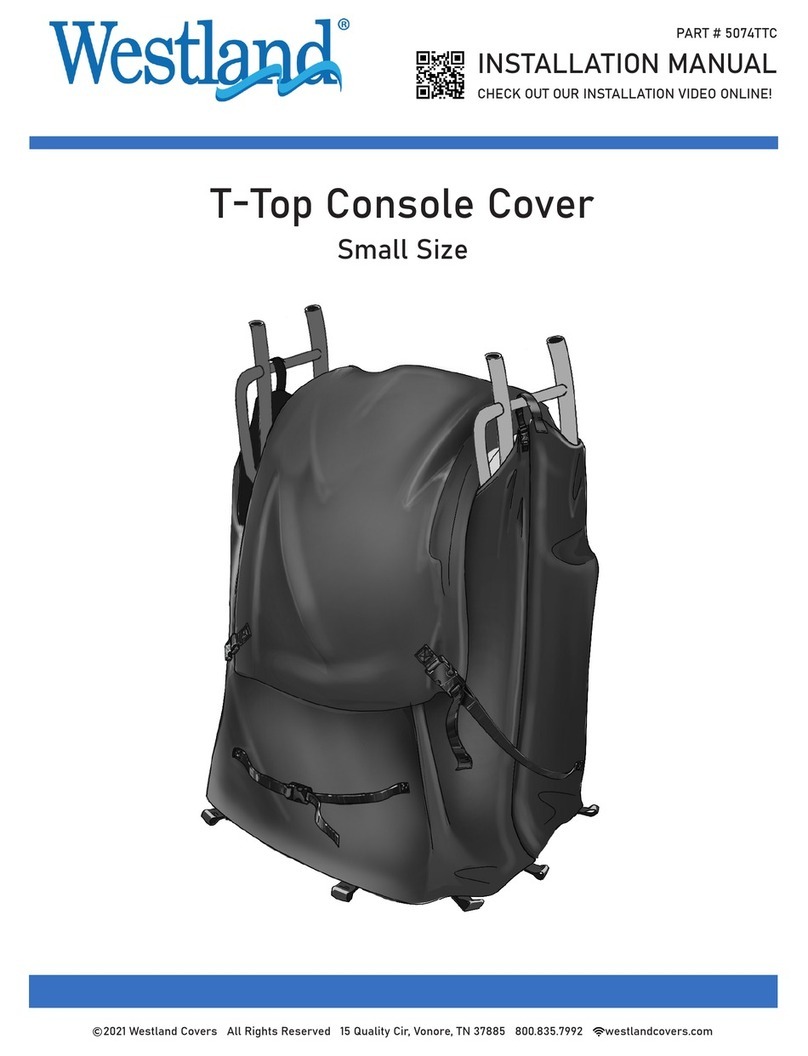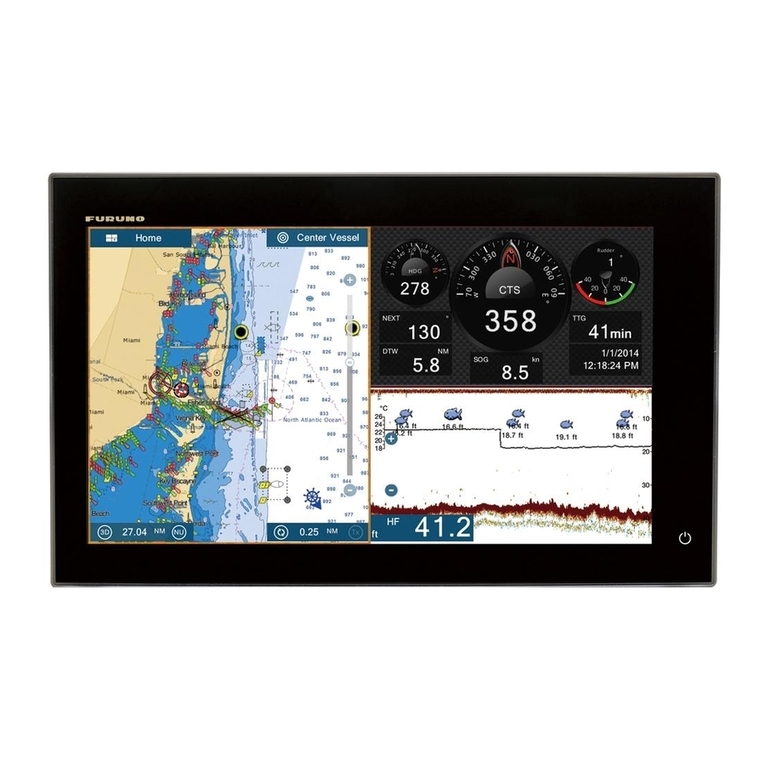
Dear Customer,
Thank you for choosing a Lofrans' product. Lofrans' is a leader company in the production and worldwide distribution
of nautical systems manufactured according to the most modern technologies, in compliance with international
regulation requirements and the most important certifying bodies. All of our products are manufactured with excellent
materials suited for operations in marine environments and are subject to continuous checks to improve the
qualitative levels and make them without any manufacturing defects. Together with such requirements, Lofrans'
anchor windlasses are a synthesis of reliability and efficiency, by guaranteeing the maximum performances during
each phase of mooring, even in the most difficult. With a Lofrans' product, years of reliable operations are guaranteed.
Lofrans©copyright, 2022. All rights reserved.
Lofrans' declines any liability for possible inaccuracies due to print errors in this manual and reserves the right to
introduce any changes deemed appropriate.
For this reason, Lofrans' does not guarantee the accuracy of the manual after the date of issue and declines all liability
for possible errors and omissions.
Contents
1. INTRODUCTION............................................................................................................................................................. 4
1.1 Purpose of the Manual ........................................................................................................................................... 4
1.2 Assistance................................................................................................................................................................ 4
1.3 Receipt and Storage................................................................................................................................................4
2. SAFETY INFORMATION..................................................................................................................................................5
3. INSTALLATION ...............................................................................................................................................................6
3.1 Contents of Package................................................................................................................................................ 6
3.2 Equipment Necessary for Installation.....................................................................................................................6
3.3 Recommended Accessories ....................................................................................................................................6
3.4 General Requirements for installation.................................................................................................................... 6
3.5 Prevention from Electrolysis...................................................................................................................................8
3.6 Stern Installation..................................................................................................................................................... 9
4. ELECTRICAL SYSTEM....................................................................................................................................................13
4.1 Electrical Cable Section .........................................................................................................................................13
4.2 Control Box / Relay ...............................................................................................................................................13
4.3 Circuit Breakers .....................................................................................................................................................13
4.4 Remote Control Electric Panel Board....................................................................................................................13
4.5 Protection..............................................................................................................................................................13
4.6 Battery Type..........................................................................................................................................................13
4.7 Command Cables ..................................................................................................................................................13
4.8 Wiring Diagram .....................................................................................................................................................14
5. USE OF WINDLASS.......................................................................................................................................................15
5.1 Lowering the anchor .............................................................................................................................................15
5.2 Weighing the anchor.............................................................................................................................................16
